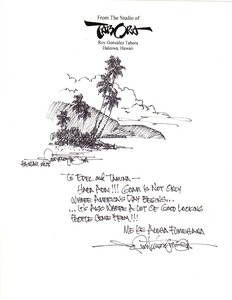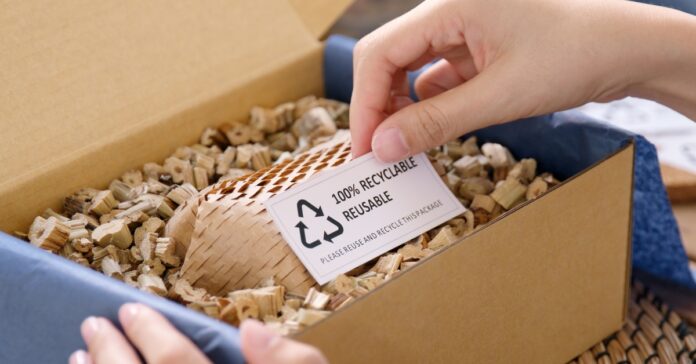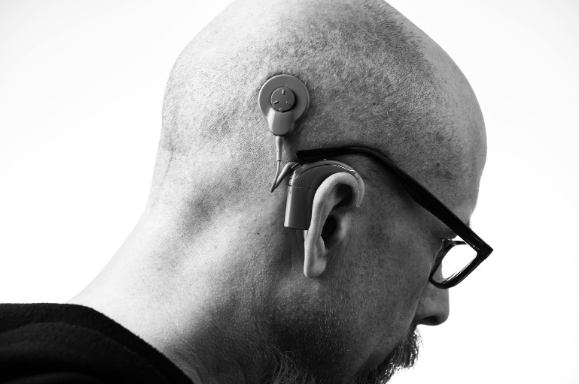When Roy Tabora’s In The Beginning is unveiled, the room itself seems to shift. Light radiates from the canvas as if dawn has slipped into the walls. At its heart, a luminous wave curls in mid-break, glowing with a golden sunburst. Around it, soft purples, pinks, and blues dissolve into one another, while the sand mirrors the scene in delicate reflection. It is not just a seascape; it is an emotional landscape that is alive with rhythm, serenity, and possibility.
A First Encounter with Light
What strikes any viewer immediately is Tabora’s mastery of light. The artist captures how sunlight refracts across water and filters through mist. There is a transforming turbulence into something almost sacred. The wave becomes a glowing cathedral as the barrel is lit from within. Colors shift between warmth and coolness—fiery amber framed by tranquil violets and blues.
This sense of rhythm and harmony is what defines Tabora’s style. The wave does not merely move—it dances. His paintings are less about strict representation and more about interpretation, infused with memory, heritage, and a deeply personal response to the sea.
The Artist Behind the Brush
Roy Tabora is a third-generation artist whose roots trace back to the Philippines. In the Philippines, his grandfather and uncles painted massive billboards by hand and relying on discipline and skill to support their families. Art was a livelihood. This early exposure instilled in Tabora a respect for craft and perseverance.
When his family moved to Guam, the young artist found himself surrounded by tropical horizons that ignited his imagination. At six years old, he began sketching waves and seascapes. Guam provided both inspiration and cultural diversity, while Hawaii—where Tabora settled in the 1970s—offered the stage on which his artistry matured.
From the start, Tabora chose full commitment. In a Huffington Post interview Tabora states, “I never had a plan B. It is a JUMP! It is a commitment.” That leap has made him one of Hawaii’s most celebrated seascape painters, renowned for creating works that are at once technically remarkable and emotionally profound.
Romantic Realism
Tabora describes his style as “romantic realism.” Rooted in close observation, his paintings elevate reality through heightened light, rich colors, and emotional resonance. Rather than chasing trends, he stays faithful to his vision.

In Roy Tabora’s work, it becomes clear that his mastery lies in his ability to fuse technical precision with a heightened emotional sensibility. This approach places him firmly within the tradition of romantic realism. While his paintings are grounded in a meticulous observation of the natural world, every ripple of water, every reflection of light rendered with near-photographic clarity are not imitations of reality. Instead, he elevates his seascapes into poetic visions, presenting the ocean not only as it is, but as it feels: vast, luminous, and deeply moving. This romantic realism allows his work to transcend the boundaries of documentation and transforms Hawaii’s coastlines into timeless meditations on beauty and tranquility. His art is not simply about depicting nature, but about evoking the profound emotional resonance it holds for those who encounter it.
In The Beginning exemplifies this philosophy. It depicts a breaking wave with sunlight shining through but the scene carries symbolic weight. The wave suggests power, rhythm, and the cycles of life. The light within the wave conveys renewal and creation itself. Gold evokes hope, blue suggests tranquility, and lavender brings mystery and wonder. Together, these elements form a visual togetherness to new beginnings.
Living with the Painting
Collectors of Tabora’s work often remark on its transformative effect within a space, and In The Beginning is no exception. In daylight, the golds blaze like sunrise. By evening, purples deepen into meditation. Each glance reveals something new: a subtle shimmer in the sand, the curve of foam, or the delicate play of light on the crest.
The work transcends decoration and a nice painting to have. It becomes a daily meditation on resilience and renewal and creates a source of calm in stress and an inspiration in reflection.
Heritage and Authenticity
Tabora’s authenticity lies in the life that underpins his art. His Filipino ancestry, Guam upbringing, and Hawaiian home converge are in each painting. The tropical skies, endless horizons, and crashing waves he experienced as a child became the vocabulary for his mature works.
This cultural synthesis lends his seascapes both intimacy and universality. They resonate with anyone who has stood before the ocean and felt small, yet deeply connected to something larger.
Philosophy and Passion
Throughout his career, Tabora has remained clear about his guiding principles: art must come from passion and love. This devotion is what gives In The Beginning its timelessness. It is not a product of market calculation but of artistic conviction. It is a canvas born of devotion to the sea, to light, and to the emotional power of beauty itself.

A Universal Beginning
Beyond its aesthetic appeal, In The Beginning resonates at the personal level. The wave symbolizes cycles of life, renewal after endings, and the perpetual possibility of rebirth. For some, it recalls mornings at the shoreline, watching daybreak with a sense that the world is being reborn. For others, it offers affirmation that change, though turbulent, carries within it the light of new beginnings.
Roy Tabora’s In The Beginning is more than an artwork; it is an encounter. It functions as both a window into the luminous seascapes of Hawaii and Guam and a mirror reflecting the viewer’s cycles of loss, renewal, and creation.
Tabora’s journey—from a family of billboard painters in the Philippines, through a childhood of inspiration in Guam, to mastery in Hawaii—is a story of passion, discipline, and authenticity. He paints not for fashion but for love, for rhythm, and for the eternal music of the sea.
And in In The Beginning, that music sings through every brushstroke, offering a timeless meditation on light, rhythm, and the beauty of beginnings.
If you’re in Hawaii, make sure to visit the Tabora Gallery to see Roy’s work and also a bunch of great local artists.













